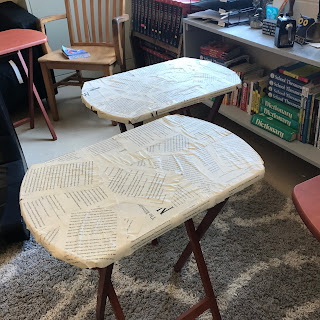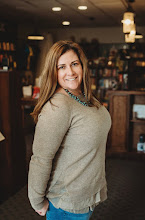 |
| Prince Ea's video |
I've been in education for twenty years. I've taught in urban areas as well as rural towns, from districts that have money to districts where money is tight, in classes of thirty kids to classes of six, and in kindergarten classrooms to middle school. I know kids. I can sense a bad day from the way they walk in the room. Usually I can talk, joke, and relax it away. That being said, I've also had words thrown my way, along with chairs. Teaching is not for the meek, this I know.
I also know middle school kids. Even without teaching them, I have two of my own. I know the emotional roller coaster that is the brain of a middle school adolescent. Even without the middle school psychology class I had to take last summer - which was a bit ridiculous - I know this age group through my own boys, and their friends.
All this is to say I should have known better.
And yet, last week, I screwed up. I know these kids by now. Out of the 75 I am currently teaching, I taught over half of them in fifth grade as well. This was one of those kids. A former student who had become a current student once again. A student not without faults - in fifth grade or in seventh grade - but a student who I dearly love. Last week this student didn't have their homework done, a poem written. When I asked about it, anger spilled out in their voice as they mumbled under their breath. Not wanting to embarrass them in front of their classmates, I asked them to step into the hall, that I'd check in with them in a minute. They looked at me with anger and didn't move.
Here's where I screwed up. The late work didn't bother me. Things happen. The angry voice when I had pointed out the late work irritated me. The blaming me for the late work really started to tick me off. Then, the blatant refusal to move got under my skin. I stopped. Looked at them. Repeated my request firmly. They went to the hall.
I continued checking in with kids, but my mind was in the hall. What did they think they were doing? They were wrong, but they were going to treat me like dirt? After all I had done? I thought I had calmed myself down as I took a lap around the room before going out to the hall. I hadn't.
I came out in the hall and gave a lecture worthy of my Irish Catholic ancestry. It was peppered with Irish guilt. My grandma would have been in awe. I talked about what they had done wrong, how much I loved them, but how hurt I was. My student stared at me, never uttering a word, and we came back in the room.
I was steaming as I walked back to the front. Congratulating myself on not yelling, but calmly stating my case, at first I felt vindicated. My student had been wrong, after all. I had to teach them to be respectful, to own up when they didn't do an assignment, etc., etc.
We gathered at the front of the room for our quick write next. With the lights off, I turned on a video. I was sharing a video from Prince EA - I am NOT Black, You are NOT White. I could tell the kids were hooked on the video. As soon as it ended, we all got our notebooks out, I set the timer, and we began to write. In the split second before I began, I saw my student's face - the one from earlier.
It was miserable.
Guilt washed over me. I knew I hadn't done anything wrong, I had treated them like I would my own children, and yet, I had missed one huge piece. Respect. When I went out in the hall earlier, I should have begun with asking what was going on. I normally do. I normally check in, see if something is up, let them talk. But today, for whatever reason, I was so keyed up myself, that I hadn't asked. I hadn't wanted to get to the bottom of their behavior, I had wanted to fix it instead.
So, I wrote with my kids. I scribbled quickly, filling up a page in my notebook in those two minutes. Writing what I wished I would have done, instead of what I did. I ended with writing, "How can I fix this now???" And my phone's timer went off.
As my students turned to talk to each other about their notebook, I watched my student. They were subdued. The end of our first period together came. Kids went into the hall to use the restroom, talk to friends, and others milled around the room, talking, waiting for our next period to begin. I waved my student to my front table.
They came up and sat down. I took a breath and looked at them and said, "I'm so sorry. I completely screwed up earlier. I was so mad that you treated me the way you did that I didn't stop and ask if you were ok, if there was anything going on, if I could help. I'm so sorry and I hope you will forgive me for that. Are you ok?"
I know my eyes were welling up as I spoke. I looked straight in their eyes, which were now streaming tears. They said they were so sorry too. That they had no idea what got into them this morning, but they never meant to treat me that way. They promised to get their work done. We laughed, wiped our eyes, fist bumped, and decided to start our day over.
Kids can get under our skin so quickly. Our job is beyond difficult. We have to think on the fly, react on the fly. I would think, by now, that I would have this down pat, but I don't. What I hope I never lose, however, is the ability to own up when I'm wrong. I'm glad I decided to start over. I'm grateful that my student saw my sincerity in that act and met me in that place to begin again as well. From there, anything is possible.
I think we have to remember that we are all human - teachers and students. We can have bad days, but that none of us is perfect. No, I don't want my students to treat me with disrespect, but I hope I don't climb so high up on my high horse that I forget what it is like to be thirteen. I hope I can remember to treat them with respect as well as expect it from them. I hope I can remember that they are just kids.
Two great articles I read this weekend can be found HERE and HERE. Both deal with student behavior if you'd like to read more.
Have a great week!














































